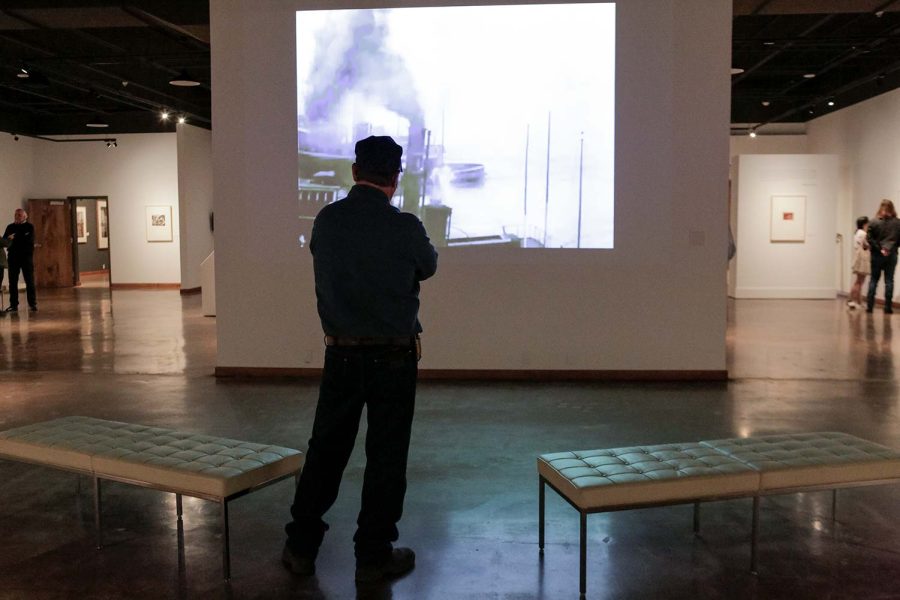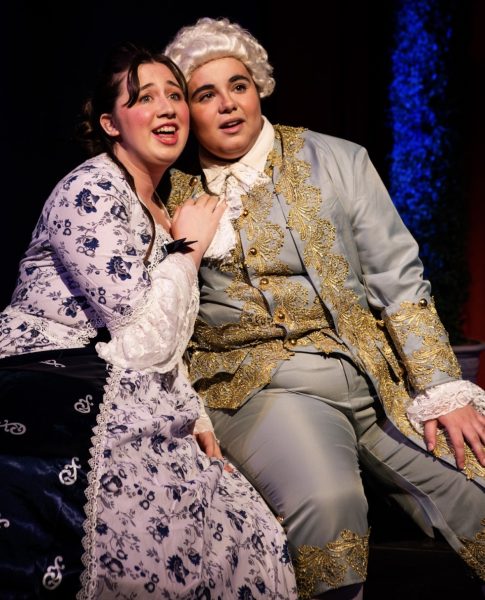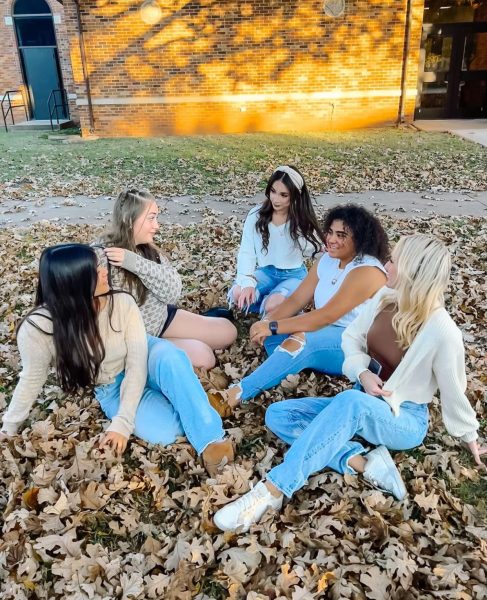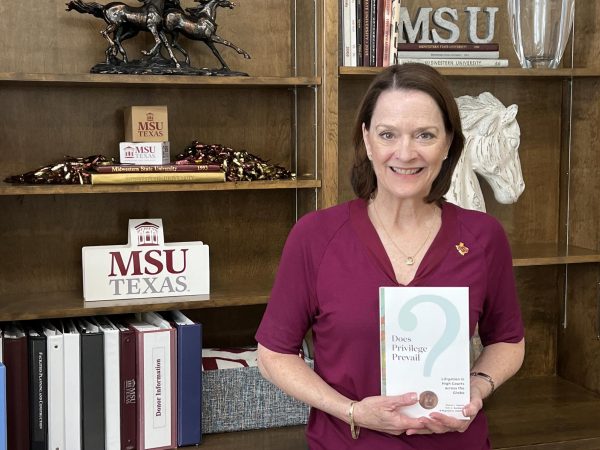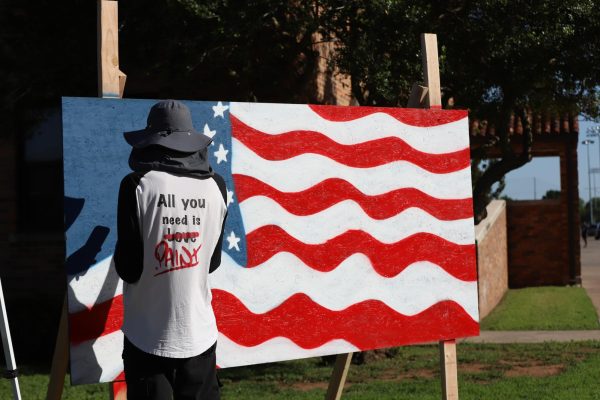From boom to bust: interdisciplinary education through art and literature
A visitor to the “Boom to Bust” exhibit watches a showing of “Manhatta,” a film by Charles Sheeler and Paul Strand, Oct. 20.
The Wichita Falls Museum of Art presented its latest art exhibit Thursday night. The museum brought 25 different artworks into conversation with one another ranging from the 1920s through the 1940s. Each piece is part of the museum’s permanent collection.
“Printmaking, works on paper, is the core of the collection. So, a lot of these pieces you are seeing were collected back in that time period,” Danny Bills, curator of collections and exhibitions, said. “You can have work by significant artists on paper, it is a lot easier to get those than large paintings.”
In 1913 the Armory show, an art exhibition that brought European art into connection with American art, was held in New York City. The experimentation of Pablo Picasso and Marcel Duchamp shocked the public while driving the artists forward to evolve with the times and find new ways to create.
“The Armory show was, you could say, the most important artistic event to happen on American soil till this day,” Todd Giles, associate professor of English, said. “We have a total of seven artists who appear in the exhibition who actually showed their work at the Armory show.”
Jerry Bywaters, a regionalist artist based out of Dallas, has three pieces featured in the exhibition. Each piece is a lithograph, a form of printmaking where the artist draws on stone or metal sheets then bonds it chemically before inking it and placing the paper for imprinting. In 2015, Jerry Bywaters Cochran, the daughter of Jerry Bywaters, gifted these artworks to the WFMA.
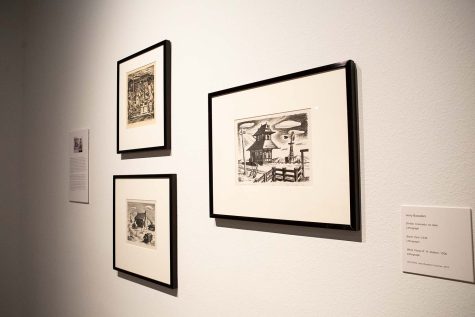
“I thought including an artist from Dallas in the show was a good choice,” Alec Burton, English senior, said. “It really shows you that the art movement during that time period was a nationwide movement.”
The English department held a class this semester that coincided with the exhibit. Students read literature that related to the artworks. The students gained the opportunity to understand the cultural significance behind each piece of literature.
“We spent the last few months looking at them on the screen. So much detail is lost when you’re looking at them on the computer. Now we can see all the little marks and notches,” Madison Howard, English senior, said. “It’s another level that we just haven’t really been able to appreciate until now.”
Along with the art works on display are books from Giles’ personal collection, lent to the WFMA for the exhibition. In one display case, the books are opened, showcasing artworks inside the covers by artists featured in the exhibition. The artwork on the inside cover of “Moby Dick” was illustrated by Rockwell Kent, whose piece “It’s Me O’ Lord” hangs on the wall next to the case. Many of the books on display are being read in the class, such as “Winesburg, Ohio” by Sherwood Anderson and “Manhattan Transfer” by John Dos Passos.
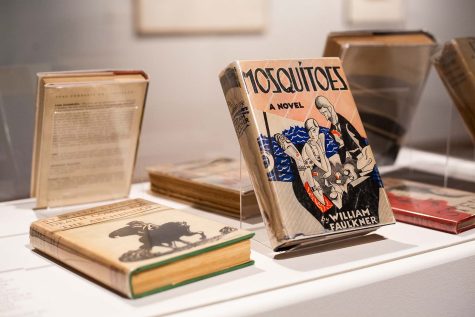
“The artworks help me as a reader to set a district scene for whatever piece of literature we are reading at the time,” Rebekah Meyer, education senior, said. “This class is very different from any literature class I have taken previously. I’m really enjoying seeing the connections between the artworks, films and literature we are reading.”
Giles opened the exhibition with a reading of the poem “Spring and All” by William Carlos Williams, an author featured in the class. The poem was Williams’ way of calling out the other writers of the time, pushing them to leave the old ways behind and grow into something new. The exhibition and the class answer Williams’ call, driving education within the English department down a more interdisciplinary path.
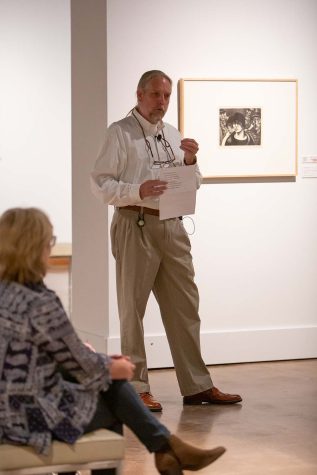
“The liberal arts are all about breaking down barriers and recognizing that learning doesn’t just happen in little vacuum sealed rooms,” Giles said. “We are not just reading literature; we’re discussing that literature in relation to art and films that were being created during the same time.”
Faces in the Crowd, a piece by Mable Dwight in 1931, is the newest acquisition to the exhibition. The piece came to the museum through the Collectors Circle, a group committed to collecting works to grow and diversify the WFMA’s permanent collection. Bills said that it’s really difficult to find works from the Works Progress Administration time period and even more difficult to find works by women during that time.
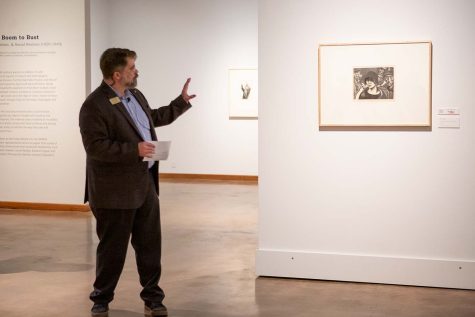
“For me it’s that transition we’re talking about between 1920 and 1940,” Bills said. “You see fashions that remind me of the 1920s but you see that somber kind of melancholy that you see when you hear the Great Depression. I looked at a lot of her work and still feel this one is the best.”
The exhibition will be open until February 4, 2023. Those who view the exhibit are encouraged to explore The Vault Unlocked podcast that is interconnected with multiple pieces on display.

Howdy hey! I'm back for my final year here at MSU, and I intend to leave the Wichitan better than I found it.
Going into my fourth year, I will be working...



